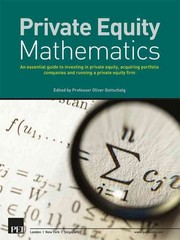Answered step by step
Verified Expert Solution
Question
1 Approved Answer
a) In hedging using futures contracts, basis risk may not arise in a hedging situation if the futures contract used for hedging relates to a
- a) In hedging using futures contracts, basis risk may not arise in a hedging situation if the futures contract used for hedging relates to a commodity that is different from that being hedged.
- b) In reality, outofthemoney put options are more expensive than atthemoney put options.
- c) Time Corp. shares and a pair of 3month options with strike price of $30 are trading at the following prices. Assuming the 3month riskfree interest rate (with continuous compounding) is 10% p.a. There is an arbitrage opportunity in this set of prices.
- d) A long position in a put option can be delta hedged by shorting delta units of the underlying.
- e) A portfolio manager who fully removes the systematic risk of a stock portfolio by selling futures contracts on a stock index, could achieve the same outcome by selling the shares and replacing the share portfolio with a riskfree bond portfolio.
- f) You are long 5 Eurodollar futures contracts. If the Libor rate underlying the contract increases by 5 basis points, your position gains +$625.
- g) A stock index currently stands at 350. The riskfree interest rate is 10% per annum (with continuous compounding) and the dividend yield on the index is 4% per annum (with continuous compounding). The futures price for a threemonth contract should be 352.52.
- h) You enter into a short Eurodollar futures contract at a price of 99.75 and close it out a week later at a price of 99.40. You have gained $375 on the position.
- i) An option is said to be inthemoney if its value is positive.
- j) The seller of a European call option will be in a loss if the underlying asset price goes down in value.
- k) A stock is trading at $100. A call option on the stock with a maturity of three months is trading at $6.60 and has a delta of 0.7. If the stock price increases to 101, the new call price will be exactly $6.20.
- l) In Black-Scholes option pricing model, the stock prices follow a normal distribution while the stock returns follow a log-normal distribution.
- m) The six-month forward price of 1g gold is $2255.69. if the risk free rate is 5% per annum and no other holding cost is involved the current price of this gold should be $2000.
- n) The Black-Scholes-Merton formula cannot be used to price European index options.
- o) A three-month European call option on a non-dividend-paying stock is selling for $2.70. The stock price is $47, the strike price is $45, and the risk-free interest rate is 6 percent per annum. Assuming no transaction costs, the option and stock prices present an arbitrage opportunity.
- p) By shorting corn futures, corn farmers can hedge against the risk of adverse weather wiping out their crop.
- q) The Black-Scholes-Merton option pricing model assumes a risk-free rate as the expected rate of return on the asset. This assumption makes the model impractical.
- r) The seller of a European put option will benefit if the underlying asset price goes down in value.
- s) A stock is currently priced at $40. It is known that at the end of three months it will be either $45 or $35. The risk-free interest rate is 8 percent p.a. Using the binomial pricing model, the value of a three-month European put option on the stock with at the money strike price, should be $2.50
- t) A calendar spread can be created by buying a call and selling a call when the strike prices are the same and the times to maturity are different.
Step by Step Solution
There are 3 Steps involved in it
Step: 1

Get Instant Access to Expert-Tailored Solutions
See step-by-step solutions with expert insights and AI powered tools for academic success
Step: 2

Step: 3

Ace Your Homework with AI
Get the answers you need in no time with our AI-driven, step-by-step assistance
Get Started


